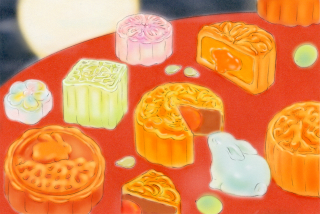Lettuce is suspect in Taco Bell E. coli case
After conducting the food equivalent of a police lineup, federal health investigators said Wednesday that lettuce was the most likely culprit in an E. coli outbreak at East Coast Taco Bell restaurants.
Despite extensive tests, officials have not found the source of an E. coli strain in ingredients from Taco Bell or its suppliers that has sickened 71 people.
Lacking a smoking gun, investigators have asked both sick and healthy Taco Bell patrons what they ate to see whether they could pinpoint the source of the pathogen that hospitalized 53 people.
The interviews pointed to ingredients common to most Taco Bell menu items -- lettuce, cheddar cheese and ground beef -- as the suspects, said Christopher Braden, an epidemiologist with the U.S. Centers for Disease Control and Prevention.
Because ground beef is cooked and cheese goes through pasteurization -- steps that when done correctly kill the bacteria -- the CDC and the Food and Drug Administration concluded that lettuce was the most likely source of the outbreak. Earlier this week, health officials said green onions were not responsible for the contamination, as first suspected.
The latest findings show that the problem results from “an ingredient issue” and is “not about the hygiene of our restaurants,” said Greg Creed, president of Irvine-based Taco Bell Corp.
Creed did not identify the source of Taco Bell’s lettuce except to say that it came from the western United States.
Irwindale-based Ready Pac Produce previously disclosed that it was the produce supplier for the 452 Taco Bell restaurants in New York, New Jersey, Pennsylvania and Delaware, the states where the outbreak occurred. Taco Bell fired Ready Pac on Saturday and now is using Taylor Farms of Salinas. Ready Pac officials did not return calls.
Creed said lettuce now served in the Northeastern restaurants comes from a different farm through Taylor, but he did not identify the grower. The leftover inventory has been discarded.
Taco Bell’s produce suppliers typically purchase lettuce from multiple farms. They clean, rinse, shred and pack the produce into sealed containers for shipment to Taco Bell’s distributors, which in turn send them to the company’s stores.
Lettuce is used in 70% of Taco Bell’s food offerings. Creed said the chain didn’t plan to remove the vegetable from its menu offerings. Braden of the CDC said he doubted that there was any more tainted food at Taco Bell.
“We have not seen new cases in a number of days,” he said. “That gives us comfort that the outbreak is coming to a close.”
Lettuce has a long association with E. coli outbreaks.
The CDC’s announcement marked the 21st time since 1995 that an E. coli outbreak had been linked to lettuce or spinach. Of the previous 20 outbreaks, nine have been traced to the Salinas Valley.
In late August and early September, an E. coli outbreak that killed three and sickened more than 200 people across the country was linked to spinach processed by Natural Selection Foods in San Juan Bautista, Calif., near Salinas, with the spinach traced to farms in Monterey or San Benito counties.
State and federal officials became so alarmed at the outbreaks linked to leafy greens that they launched a “Lettuce Safety Initiative” just before the spinach outbreak, working with companies in the Salinas Valley region to evaluate growing and processing practices.
California and Arizona grow much of the nation’s lettuce, and the Taco Bell outbreak -- which began in November -- occurred during the month when production shifts from the Salinas Valley to the Imperial Valley and Yuma, Ariz., for the winter, said Trevor Suslow, a UC Davis food pathologist.
Despite the continuing investigations, officials have been unable to pinpoint how the leafy greens are being contaminated. Some theories: fields tainted by foul water, wildlife leaving contaminated manure in the fields, or workers carrying the bacteria on their hands or clothes.
Produce need be contaminated with only a small amount of E. coli for a person to fall ill. The E. coli O157:H7 strain lives harmlessly in the intestines of cattle and is present in manure. It can be passed to humans through contaminated food.
The strain is particularly dangerous because it adheres to the intestinal wall and exudes a toxic material that can dissolve it, causing bloody diarrhea, extreme cramping and, in severe cases, kidney failure and death.
Taco Bell has launched a newspaper ad blitz and public relations campaign to try to recover from the outbreak.
In advertisements published in USA Today and East Coast papers, Creed said he would support the creation of a coalition of food suppliers, competitors and regulators to develop better ways to protect the food supply.
Taco Bell also has hired Michael Doyle, director of the Center for Food Safety at the University of Georgia, to review its food safety guidelines and supply chain and to work with federal health officials to help find the source of the outbreak.
Creed said the company had lost customers but he declined to estimate lost sales.
The chain’s same-store sales, an important measure, will probably drop 20% this month, estimated Joseph Buckley, a Bear Stearns & Co. analyst, in a report Monday.
Buckley said Yum Brands Inc., Taco Bell’s corporate parent, would report earnings of 76 cents a share in the fourth quarter, down 4 cents from his previous estimate.
Shares of Yum, which also owns KFC and Pizza Hut, rose 62 cents to $58.60.
*
ron.lin@latimes.com
More to Read
Eat your way across L.A.
Get our weekly Tasting Notes newsletter for reviews, news and more.
You may occasionally receive promotional content from the Los Angeles Times.











